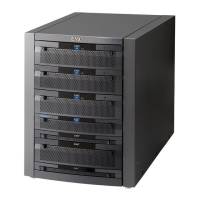fs_rdf
67
The fs Commands
EXAMPLE #2 To display RDF related information for ufs1_snap1 from the R2
Control Station, type:
$ fs_rdf ufs1_snap1 -info
id = 20
name = ufs1_snap1
acl = 0
in_use = False
type = uxfs
volume = v168
pool =
rw_servers=
ro_servers=
rw_vdms =
ro_vdms =
backup_of = ufs1 Fri Apr 23 16:29:23 EDT 2004
stor_devs =
002804000190-0052,002804000190-0053,002804000190-0054,002804000190-0055
disks = rootd33,rootd34,rootd35,rootd36
RDF Information:
remote_symid = 002804000218
remote_sym_devname =
ra_group_number = 2
dev_rdf_type = R1
dev_ra_status = READY
dev_link_status = READY
rdf_mode = SYNCHRONOUS
rdf_pair_state = SYNCINPROG
rdf_domino = DISABLED
adaptive_copy = DISABLED
adaptive_copy_skew = 65535
num_r1_invalid_tracks = 0
num_r2_invalid_tracks = 696030
dev_rdf_state = READY
remote_dev_rdf_state = WRITE_DISABLED
rdf_status = 0
link_domino = DISABLED
prevent_auto_link_recovery = DISABLED
link_config =
suspend_state = NA
consistency_state = DISABLED
adaptive_copy_wp_state = NA
prevent_ra_online_upon_pwron = ENABLED
See Example #1 for a description of command output.
remote_sym_devname the storage system device name of the remote device in an RDF pair.
ra_group_number the RA group number (1-n).
dev_rdf_type the type of RDF device. Possible values are: R1 and R2

